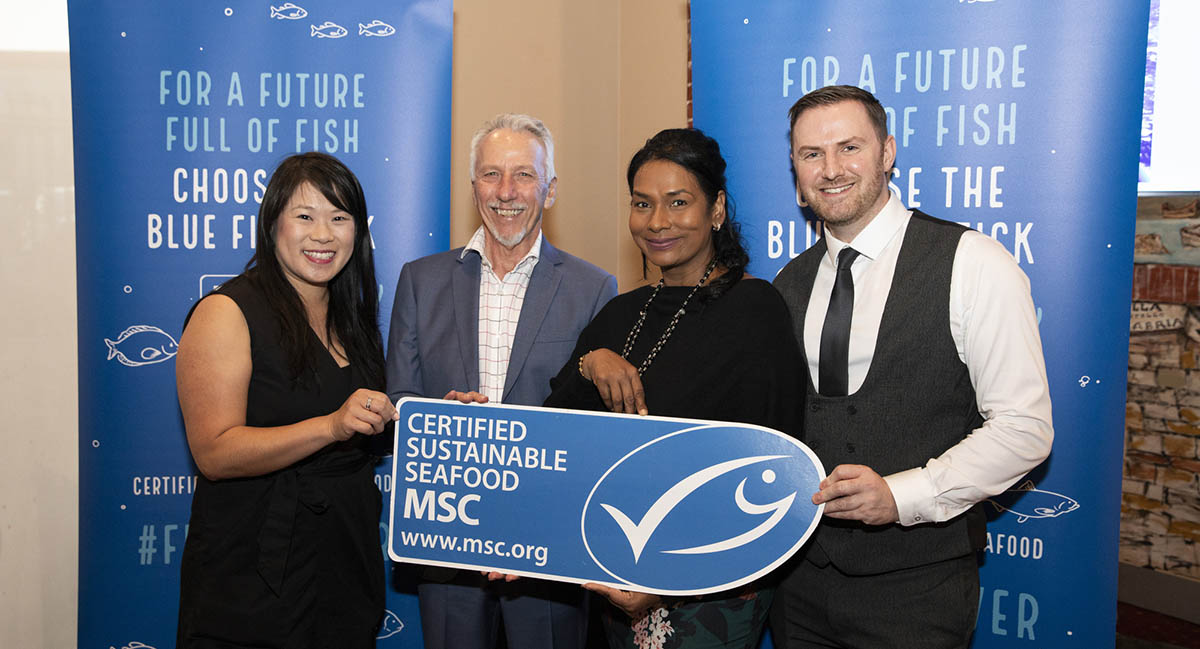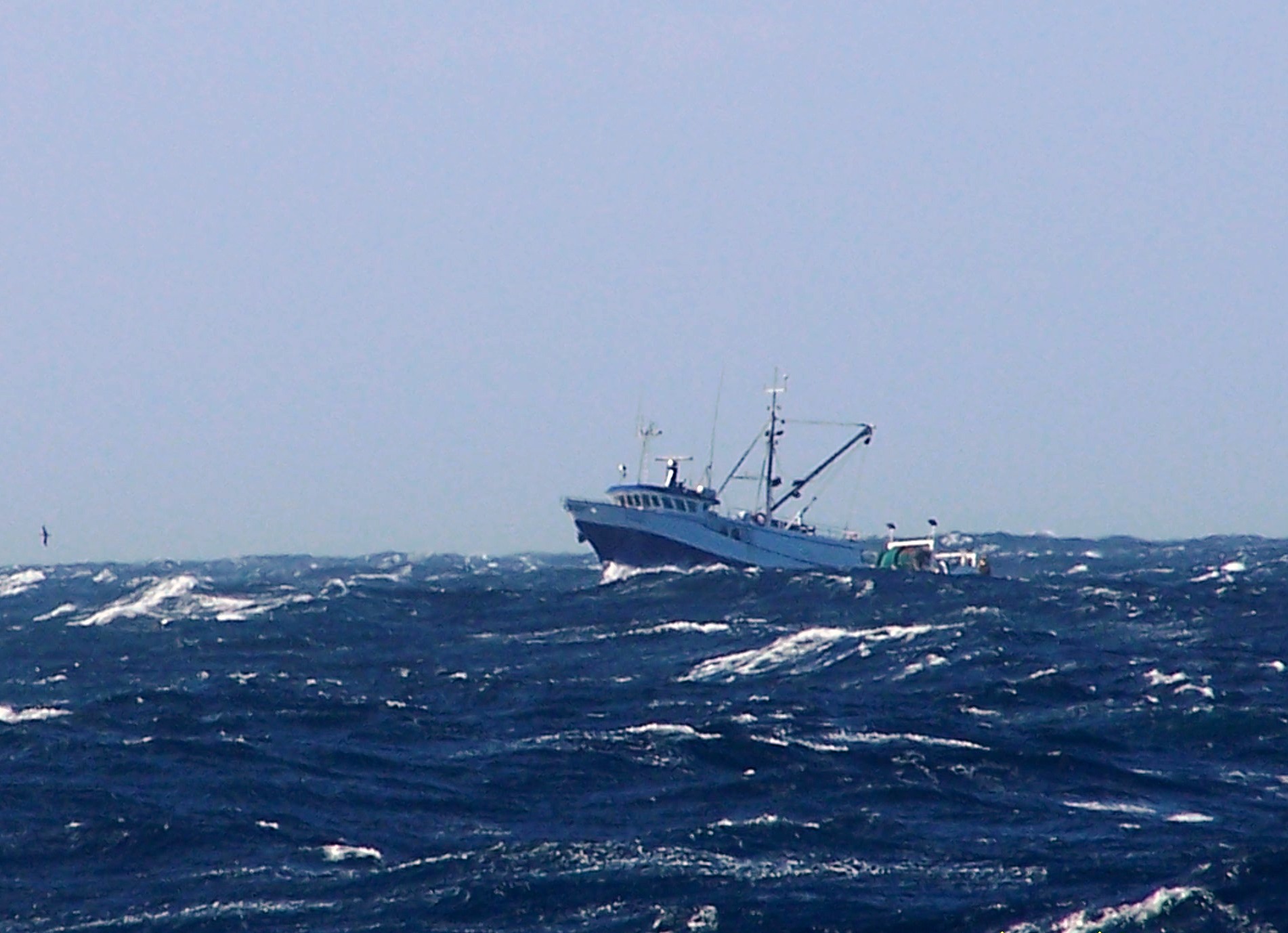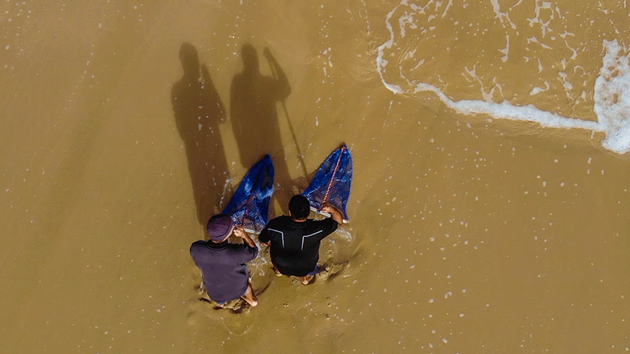What an incredible achievement that on World Fisheries Day, the Great Australian Bight Trawl fishery officially joins the ranks of one of the most sustainable fishing operations in the world as it meets the international, independent science-based fisheries standard of the MSC.
This includes three new species (Bight redfish, Gummy shark, and Deepwater flathead) into MSC’s already wide repertoire of certified seafood from Australia of over 38 species.
The addition of the three new species showcases the ecological diversity of the Great Australian Bight and opens new opportunities in the current market, adding to the wide range of MSC-certified sustainable fish species available in Australia. Market relevant, the fishery has also demonstrated high-performance standards, ensuring that the product is responsibly sourced and sustainable.

The MSC team with Neil MacDonald
I acknowledge the efforts of the Great Australian Bight Industry Association for its hard work and outstanding leadership and personal thanks to Neil MacDonald.
I thank the Commonwealth government and AFMA for their support and commitment to best practice management, and also personally thank Anna Willock and Wez Noris for their continued support of the MSC program, as well as the Marine Parks grant program for the financial support that helped make this possible.
Undertaking an MSC assessment is never easy, and a very brave thing to do
This fishery has essentially opened itself up to public scrutiny through an independent and very rigorous process. Asking an independent team of scientists to review all aspects of the fisheries' performance and make public the results, is a process that takes the best part of the year and involves scientists looking at stock health, its impact on the ecosystem, and the strength of fisheries management; and comparing these outcomes with the MSC's global bar for sustainability.
The exemplary improvements and innovation of this fishery include the healthy stock levels across its three species and a commitment to making further improvements, including gathering more information on the other marine species it interacts with.
Everyone should feel confident the future health of this fishery is in very good hands
The Great Australia Bight fishery (GAB) fishery is relatively under-exploited with the remote location of the Great Australian Bight away from major population centres dictating that only a few commercial ventures have historically operated in the region.
Improvements made by the fishery include
- The GAB’s target stocks are incredibly healthy, with bight redfish, gummy shark above target levels, and deepwater flathead hovering around the target levels for the past 10 years
- Previous industry efforts to reduce pressure on bight redfish led to a strong stock recovery which demonstrate that adaptive fisheries management works
- Catch and discards are well recorded and validated by independent observers, with long-term fishery-independent data sets dating back to 1994
- Endangered species interactions are incredibly low and since 2017, the fishery has used a choice of seabird mitigation devices further helping to limit the risk of ETP seabird interactions
- Trawl hours have decreased in the fishery since 2005 helping to show more than 50% reduction in fishing effort
- 7.6% of the available trawl grounds between 0-1500m depth are trawled annually – this is a very light fishing footprint.
I welcome credible solutions found to the one fishery condition which focuses on collecting information to help validate endangered, threatened, and protected species interactions in the Danish seine component of the fishery with additional observer coverage.
The role of business is pivotal in the uptake of the MSC program
As a market-based program, the MSC theory of change revolves around incentivizing fisheries to reach the highest bar in sustainability as a response to market demand and consumer ask. This will ensure future generations can enjoy the seafood we are about to eat today and see oceans that are full of life, forever
Today, MSC-labelled products are traded at over US$12b in more than 66 countries with over 20,000 products using the MSC blue fish tick label. These numbers are relevant to us here as our latest consumer research tells us that Aussies are very concerned about the threats facing our ocean and are changing their decisions and habits to play their part.
They are asking not just for any eco-labels on products for them to choose from, but eco-labels from independent, science-based organizations. We also know that this has led to the ACCC driving the scrutiny on greenwashing which the MSC in Australia has been closely engaged and participated in.
MSC-certified Australian fisheries have led to over 116 fisheries improvements – anything from bycatch reduction: and its impact on our ecosystem to more effective management processes.
Collaboration is a key imperative for better outcomes for our ocean
None of this would have been possible without the investment and leadership of a diverse group of people.
Our Fishing for the Future Report clearly showcases how highly engaged these diverse groups of people across governments, NGOs, scientists, and industry representatives and their respective areas of focus.



